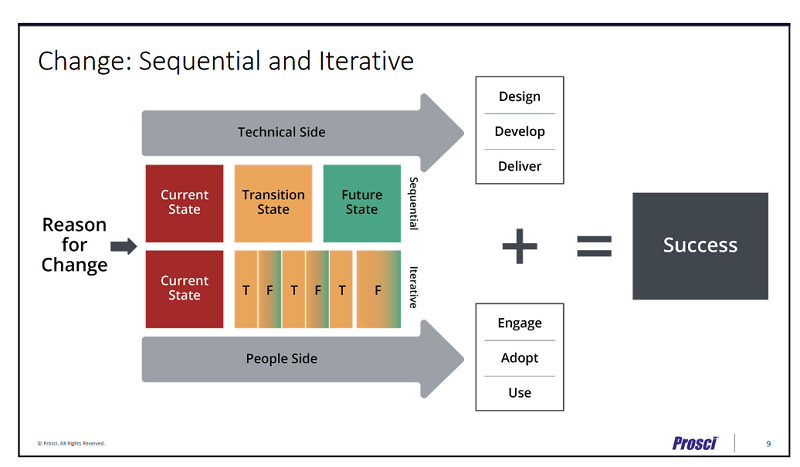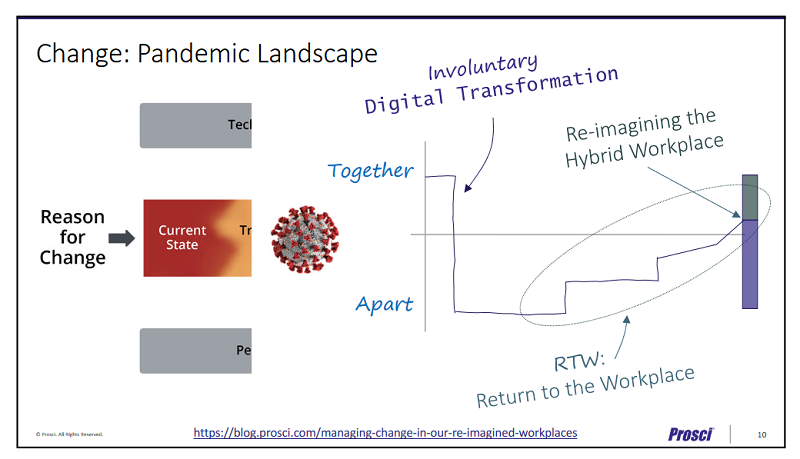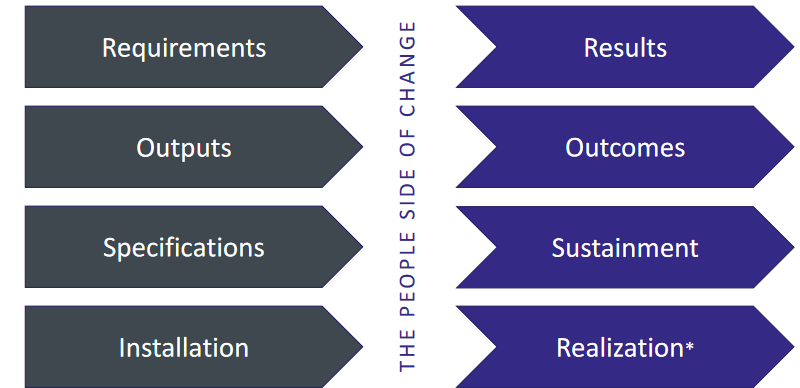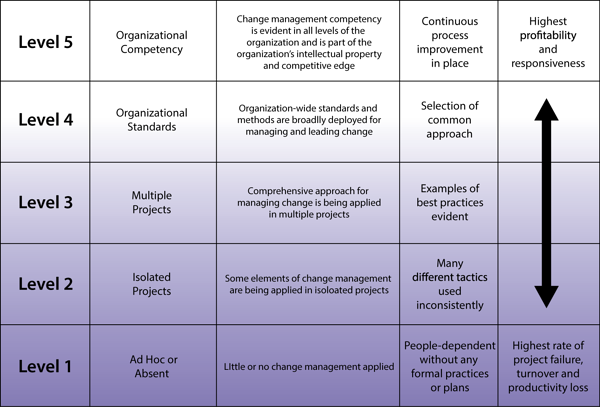Enhancement to ADKAR (PROSCI)
Recently PROSCI has updated its framework, concepts approaches, etc ie see below diagrams
1. Change is sequential and iterative, ie

(source: Tim Creasey, 2020; https://www.prosci.com/resource)
2. Change in the post pandemic context
Below diagram attempts to highlight that in addition to digital pressure for change there are societal ones around the impact of the pandemic (starting 2020), eg the way we work

(source: Tim Creasey, 2020)
3. Overemphasis on Organisational Roles in Change
The below diagram articulates the way different formal organisational roles can be played in change.
NB 'Sponsors' refers to management.
Unfortunately, this diagram does not explore the important role of the informal leaders who don't necessarily have their significance recognised in the formal organisational structure.
These informal leaders are pivotal in any change process (for more detail, see elsewhere in this Knowledge Base)

(source: Tim Creasey, 2020)
4. Three different approaches to change

(source: Tim Creasey, 2020)
5. In change, you need to focus on both the
- technical side, ie what is changing?
- people side, ie who is changing and how?
Change involves both the technical and the people sides to be effective (see diagram below)

(source: Tim Creasey, 2020)
6. Whys
People need to have the belief that they can handle the change effectively and efficiently, especially around cost and risk.
People in change have to understand
- why change is required, eg identify the goals, aims and objectives of the change. By making them shared, this creates a common direction. It is the value proposition.
The why can be broken into elements like logical why, emotional why, visual why, story why, etc
- the impact of change on people
- how are you going to drive the change?
- the costs involved to achieve the identified benefits
- what are the milestones?
- who are the stakeholders and what are their roles?
- who will have to do their jobs differently, etc
The discipline of change management is understanding frameworks and techniques that are enablers.
A vision ( you go where you are looking)
Good questions will need to be posed if change is to be effective and efficient.
7. Mindsets
When changing need to change mindsets like
- requirements of the change to results of change
- outputs of the change to outcomes coming from the change
- specifications about what is changing to sustaining the change in operational mode
- installation of change to realise the benefits of change
(see the below diagram)

(source: Karen Ball, 2020)
8. PROSCI Impact Index

(source: PROSCI, 2020)
9. Maturity model (starting with level 1 - the lowest level and level 5 - most mature)

10. Triggers for Change
| Trig | gers | ||
| strategic plans | competitive threats | ||
| internal performance | customer demands | ||
| continuous improvement | market and economic shifts | ||
| demands to do more with less | new technologies | ||
| regulation/legislation | |||
| Internal | External | ||
| costs lowered | market share gains | ||
| revenue increased | customers more satisfied | ||
| errors reduced | relationships extended | ||
| efficiencies gained | risk exposure decreased | ||
| Go | als |
(source: PROSCI, 2020)
